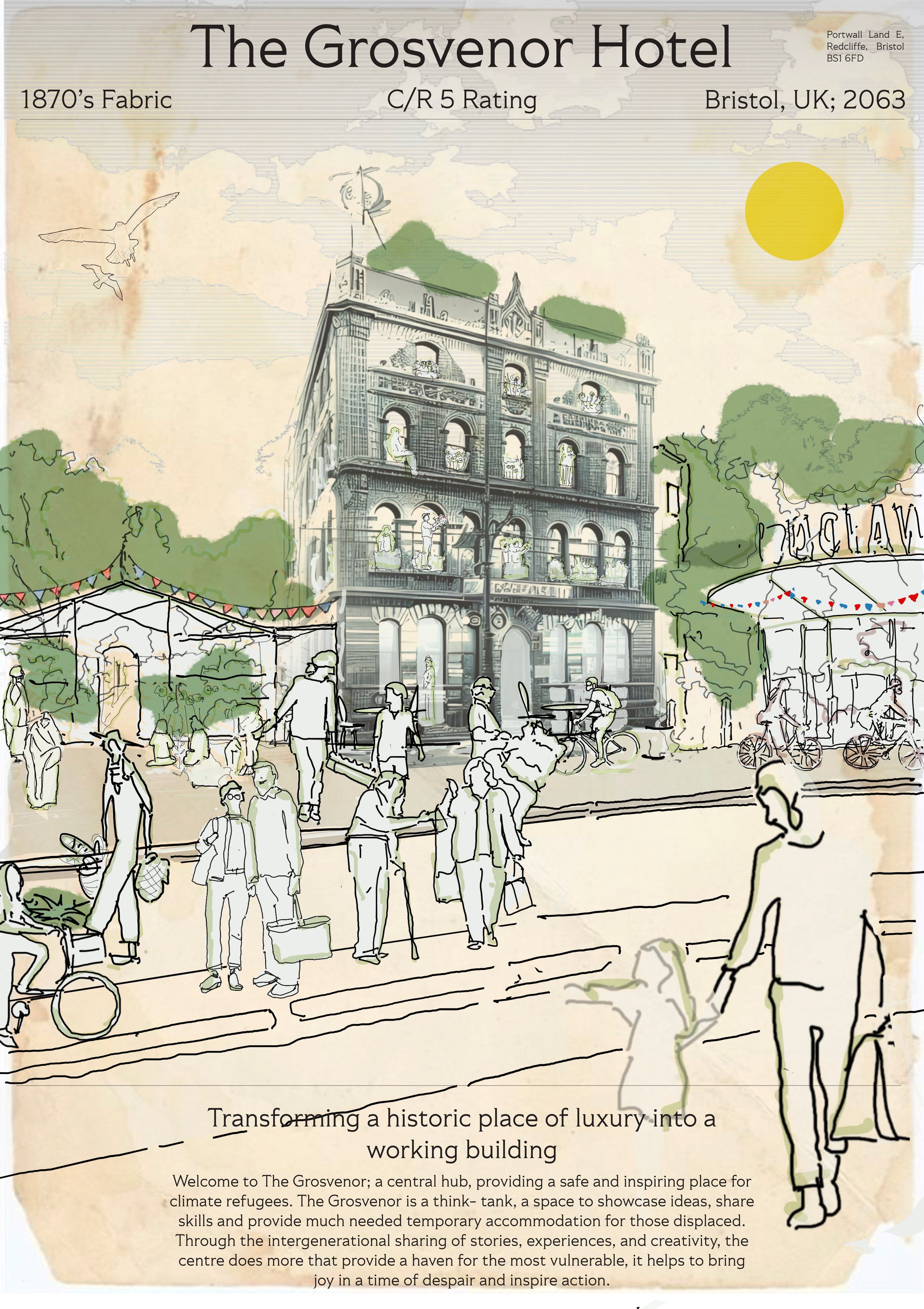Climate Creatives Challenge: Adapting Historic Environments
Our part 1 architectural assistant Isuri Ratnayake shares her experience taking part (and being awarded 3rd place) in the international design competition: ‘Climate Creatives Challenge: Adapting Historic Environments’
The CCC challenge #3 was a design competition organised in association with Historic England and the environmental design studio, and came up as a competition of interest as the brief discussed the use of a historic building or environment, how it will be impacted by climate change and how it could be adapted to be more resilient.
At ACA, great consideration is given to sustainability and the potential environmental impacts of our design work, so this project made a great opportunity for us to brainstorm and utilise a limited time to propose a strong concept as a solution for the brief.
We focused on a site which we were all familiar with, the Grosvenor Hotel, located in Temple Meads. Our idea for the project was to consider how this historically significant Grade II listed building that has been neglected for decades could be transformed into a working building, providing safety and inspiration for climate refugees. A space to share ideas, skills, provide temporary accommodation for the displaced.
Our hope for the project was to help the readers to re-consider how we place value on heritage buildings, sites, and suggest a new social model for harmonious interaction between society, buildings and the wider environment. Our proposal also integrated a new Climate resilience matrix that identifies historic sites across the UK that naturally demonstrate more climate resilience. The idea of this new matrix is to highlight the importance of investment into those environments, as we look to repair and restore historic fabric.
“Nearly 80 years since its last paying guest, the Grosvenor Hotel (formerly the George Railway Hotel) is alive with magic again. After decades of neglect, illegal occupation and abuse, the Grade II Listed ‘grand’ hotel is once again a place of celebration. It received the UK’s first C/R Listing (Climate Resilience Listing), saving it from the wrecking ball, instigating its revitalisation and transforming the historic place of luxury into a working building, providing a safe and inspiring place for climate refugees.
Reframing how we place value on heritage buildings and sites to include consideration of their inherent Climate Resilience allows the Grosvenor to become a think- tank, a space to showcase ideas, share skills and provide much needed temporary accommodation for those displaced. The adaptation of the building reflects a new social model, where a shift in values inspires action for humans and the environment live harmoniously once more.”
Entering this competition with my colleagues was a great experience to work collaboratively on a short project and to think critically on possible solutions regarding the climate emergency, and how we can preserve our historic buildings while allowing a community revitalisation.
I enjoyed that the project was conceptual, allowing us to think more creatively and propose suggestions on how the existing listing criteria of buildings could be improvised. Having discussions with the team expanded my knowledge on historical buildings, sites and conservation.
It was an exciting task to work on the imagery to communicate our concept, and I will be keeping an eye out for future competitions we could get involved with!


